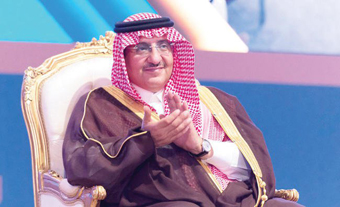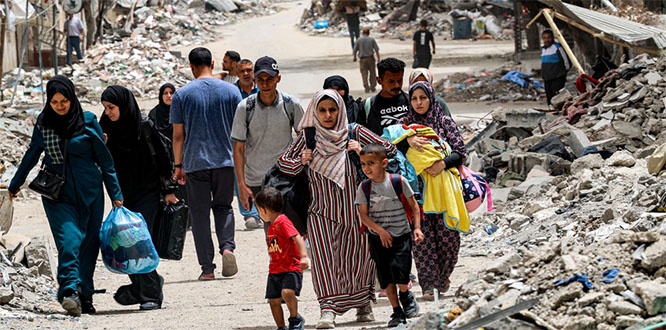Madinah, May 12: The 17th Scientific Forum for Haj, Umrah and Visit Research was inaugurated Wednesday at Taibah University in Madinah by Crown Prince Mohammed bin Naif, chairman of the Higher Supervisory Committee of the Custodian of the Two Holy Mosques Institute for Haj and Umrah Research.

The theme of the forum involved studies of management, economics and jurisprudence, health and environment studies, as well as awareness and information centers, architectural and engineering studies, and information technology.
More than 200 researchers and participants are presenting their experiences via 46 research papers pertaining to their relevant fields, all of which have been made available on the forum’s scientific register.
Also present were Prince Faisal bin Salman, governor of Madinah and chairman of the Haj Committee in the region; Mohammed Saleh Benten, minister of Haj and Umrah and acting minister of education; Bakri bin Maatouq Assas, director of Umm Al-Qura University and general supervisor of the Custodian of the Two Holy Mosques Institute for Haj and Umrah Research; and Abdulaziz Al-Sarani, director of Taibah University.
The participants and audience then viewed a presentation on the achievements of the institute, as well as research partnerships with concerned parties.
The participants urged the media to convey the true endeavors to offer services and secure the safety of pilgrims.
During their second scientific meeting called “Awareness and Media,” held under the chairmanship of the director of Taibah University, Abdulaziz Al-Sarani, participants also called for countering malicious campaigns targeting the Kingdom and discussed several issues related to the media.
Abdullah Al-Wazzan from the Northern Border University presented the paper titled “The role of Twitter in raising environmental awareness among Saudi university youth,” stressing that “there is an urgent need to enhance environmental awareness and help the youth get acquainted with issues pertaining to it, particularly those that pose a danger to humans” and how important it is that “university students acquire awareness of the environment.”
He called on Twitter users to publish material — news, comments, photos and videos — pertaining to the environment.
Eman Fathi Abdel Mohsen, from the college of Social Sciences at Umm Al-Qura University, presented a scientific paper on the effectiveness of designing an application on smartphones to raise the awareness of visitors to the Prophet’s Mosque about religious tourism in Madinah, stressing that there is consensus on the need to design an electronic guide application in this regard.
“Al-Baqi was one of the religious tourism sites most visited, according to a study conducted in Madinah, followed by Jabal Uhod, and the Green Dome Mosque came third,” she said.
In their paper, Wajdi Helmi Abdul Zaher and Mohammed Ali Gharib, from the college of Social Sciences, Umm Al-Qura University, also highlighted the important role the media play in promoting the image of the Kingdom of Saudi Arabia to those who perform Haj and Umrah, and the need to conduct media campaigns abroad.
They pointed to “the need to monitor the interactive relationship between the Saudi security media and the degree of satisfaction of pilgrims, which strengthens the religious message,” and the importance of monitoring and addressing media messages aimed at distorting the image of the Kingdom.
Another working paper titled “Studying the most effective guidance forms and symbols in the Prophet’s Mosque” concluded that there is a need to unify the guiding signs and highlight the identity and importance of Madinah.






Comments
Add new comment